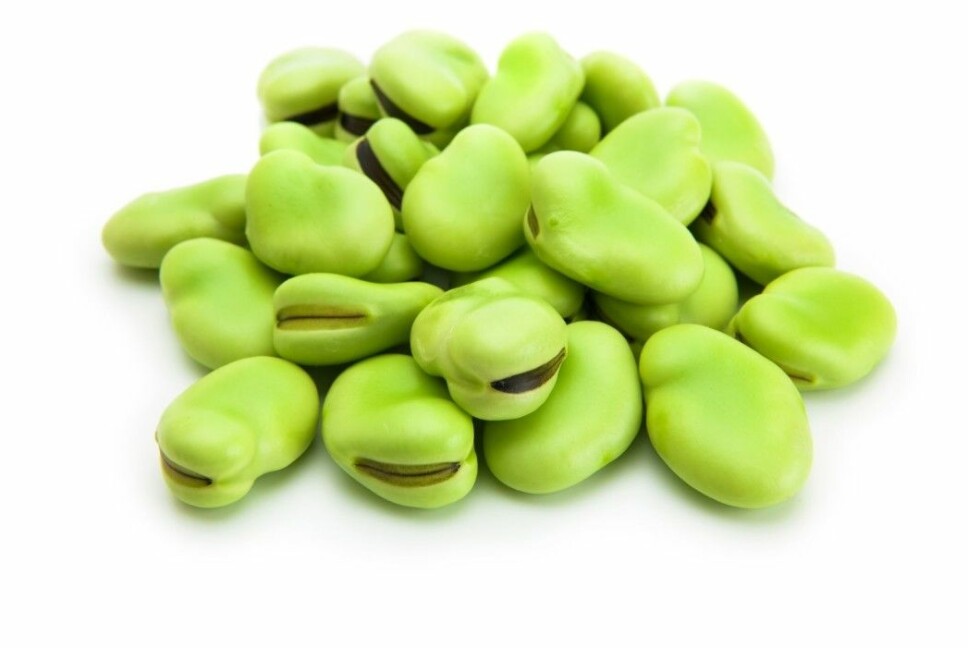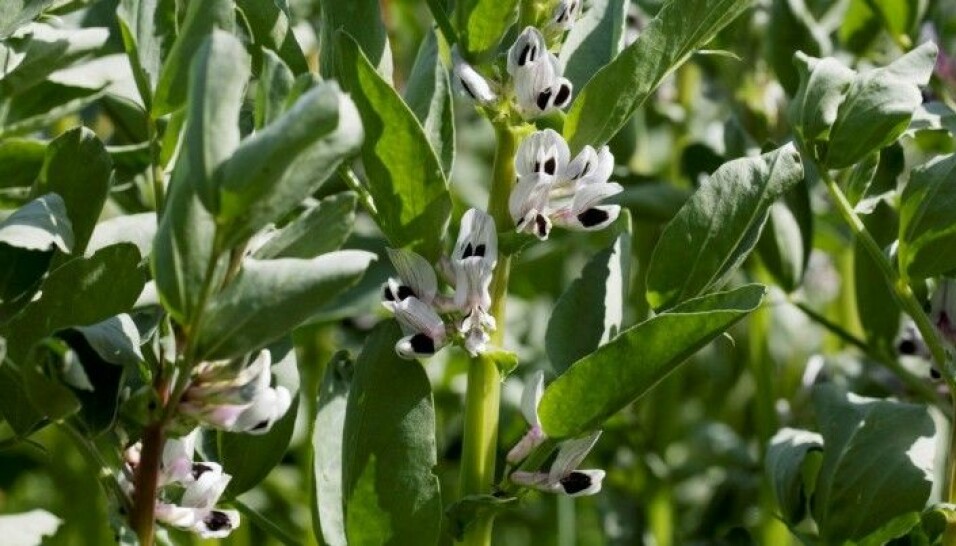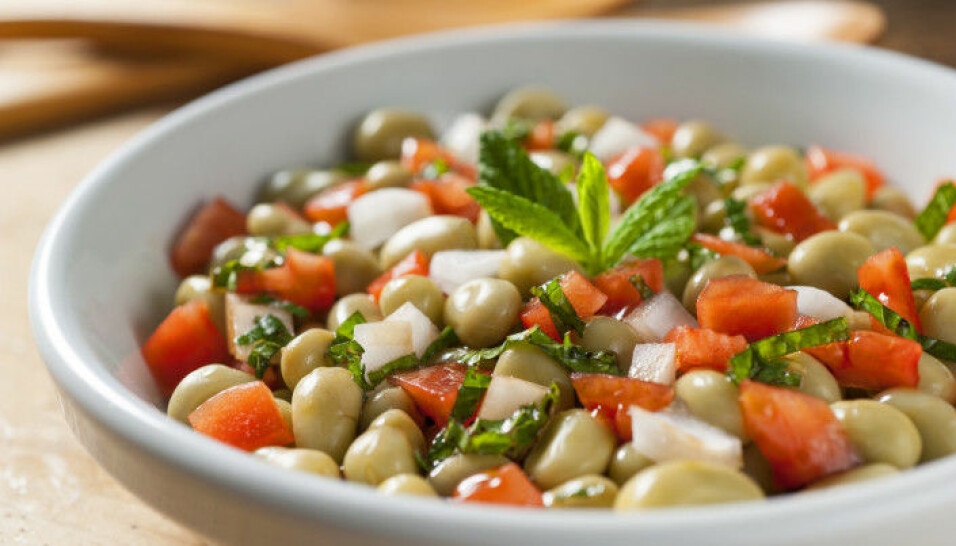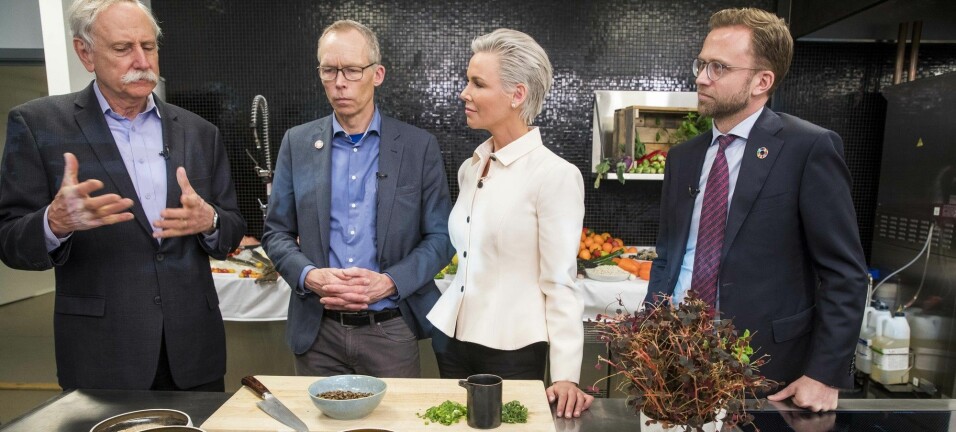
Norwegian beans can replace foreign soy
Soy from different countries is now widely consumed by vegetarians or by people who want to reduce the amount of meat they eat. But Norwegian-grown fava beans can be an equally good protein replacement, new research confirms.
New research from Denmark and Norway is good news for people who want to avoid eating meat, or to reduce their meat consumption.
Meat alternatives are being studied in a number of countries. Now, scientists at the University of Copenhagen have managed to make a tasty protein powder from fava beans, which are far more climate and environmentally friendly than soy.
These beans are also more cold tolerant than soybeans. That means they can be grown in Norway.
Alternatives to soy
Soy milk, tofu and minced meat made from pea proteins — more and more people are choosing products like these, rather than meat and dairy products from the animal kingdom.
Some people make these choices because they are vegetarians, others because they want climate-friendly food alternatives, or because they want to eat fewer animals.
But many people don’t realize that a number of today's alternatives to meat and dairy products are based on foreign soy.
Fava beans, horse beans, farmer beans
Fava beans are also known as broad beans, faba beans, horse beans and field beans.
They are far more environmentally friendly to grow than soy. And they are actually a very good alternative to soy, the Danish researchers concluded in a study published in the journal Foods.
“We have found a method to process the fava bean so that we can produce a concentrated protein powder,” Iben Lykke Petersen says in an article on the study on the University of Copenhagen website.
The powder has a neutral taste and also has an appealing light colour and a solid texture, according to Petersen.

Can be grown in Norway
Unlike soy, fava beans can be grown in Norway. Farmers are already growing them today. But most of this production now goes to animal feed.
"If we are going to find good substitute products for meat, it is important that they look and taste as much like meat as possible," says Anne Kjersti Uhlen, a plant scientist at the Norwegian University of Life Sciences (NMBU) and at Nofima, a food research institute, both in Ås.
She says that researchers in Ås are conducting experiments similar to the Copenhagen researchers. Norwegian researchers have tested both fava beans and peas as substitute products for soy under the auspices of the FoodProFuture project.
“We have also found that fava beans may have the greatest potential as a substitute for soy,” she said.
“Soy has a protein content of 40 per cent, fava beans have 30 per cent protein and peas a little over 20 per cent. But through what is called fractionation, we can increase the protein content of the fava beans to as much as 60 per cent,” she said.
Fractionation means using air to sort the flour particles in the fava beans.
“This makes them quite suitable both as an ingredient for protein enrichment and for the production of meat substitute products,” Uhlen says.

Must be more environmentally friendly
Ulhen thinks it is exciting to be part of this kind of research, because the potential for new food products is so great.
“At the same time, it’s important that the processes we use to fractionate the beans to increase the protein content have as small an environmental impact as possible,” she says.
The whole reason for looking for alternatives to meat and soy is to find products that are better for the environment and the climate.
Tastes good, too
Taste is also important in finding good substitutes for meat.
Here, the Danish scientists believe that the protein powder from fava beans can compete with soy. The powder has a neutral taste and should be attractive in terms of colour and texture.
A neutral taste, a light colour and firm texture are exactly what food manufacturers are often looking for.
The Danish researchers also note that fava beans do not have the slightly bitter aftertaste that many associate with meat substitute products made from peas.
In addition, the proteins from processed fava beans are absorbed almost as easily by the body as proteins from meat and eggs, the Danish researchers report.
Cultivate more in Norway
Uhlen sees that fava beans offer an opportunity for farmers to meet the future demand for legumes in Norway.
She, like her Danish colleagues, is also focused on improving the country’s ability to grow more fava beans, rather than importing almost all of foods that come from these products.
“We should simply eat more protein-rich plants. It’s good for our health and the planet — and can become a good source of income for food producers,” she said in an article produced by NMBU from last year.
Recently, 30 fava bean farmers from the county Vestfold visited Nofima to hear the latest news about research to convert fava beans into meat substitute products.
Farmers are an important part of the value chain for what could become a whole new food business in Norway.
Perhaps these Norwegian Vestfold farmers will grow the burgers of the future?
Beans are beneficial for agricultural soil
Uhlen also points out that cultivating legumes is beneficial for the soil, when alternated with grain cultivation.
In addition, legumes such as fava beans can use nitrogen from the air by virtue of their symbiosis with nitrogen-fixing bacteria. That means these plants don’t need nitrogen fertilizer.
Uhlen says when you consider environmental footprints, legumes are even better than cereals, for example.
The plant scientist also believes that meat substitutes have to be cheaper than store-bought meat, which is largely not the case today.

Used to make falafel
Today, fava beans are grown primarily in the Middle East, China and Ethiopia.
But they are easily cultivated and are suitable for a cool climate. The plant belongs to the pea flower family and grows from 40 to 90 cm high.
Fava beans combined with chickpeas can be used to make falafel, a popular food from the Middle East that has become increasingly popular in Norway.
Translated by: Nancy Bazilchuk
Reference:
M. Vogelsang-O'Dwyer et al. Comparison of Faba Bean Protein Ingredients Produced Using Dry Fractionation and Isoelectric Precipitation: Techno-Functional, Nutritional and Environmental Performance. Foods , March 2020. doi: 10.3390/foods9030322
———
Read the Norwegian version of this article at forskning.no
































